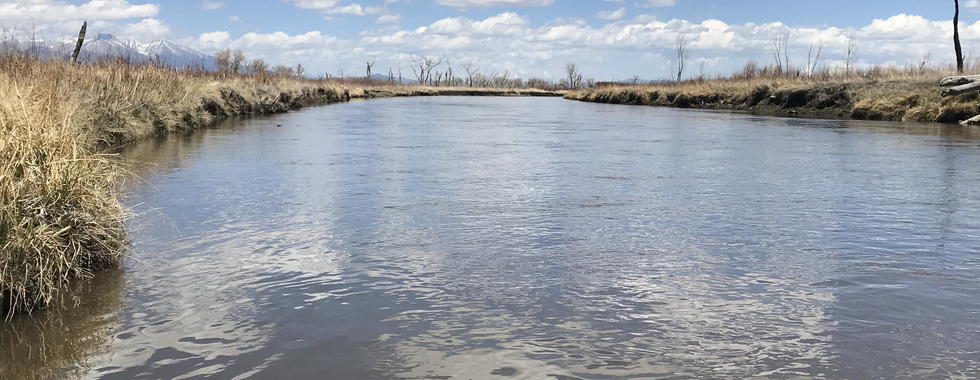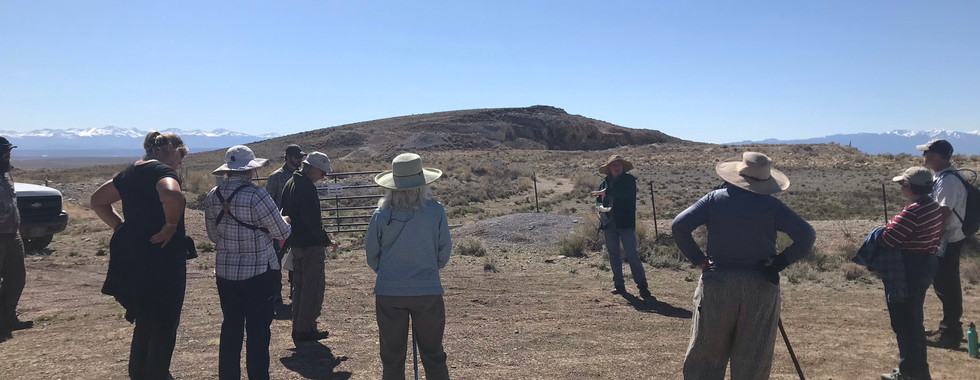SLVEC is Collecting Critical Baseline to Help Protect a Vital Reach of the Rio Grande
- Zaylah Pearson-Good, Communications Manager

- May 20, 2021
- 5 min read
Updated: Sep 23, 2022
By Zaylah Pearson-Good
Central to the San Luis Valley Ecosystem Council’s (SLVEC) mission is to protect and restore the biological diversity, ecosystems, and natural resources in the Upper Rio Grande. In line with these values, SLVEC is currently working to inform policies that would grant long-term protection to the Rio Grande Corridor in Colorado’s Conejos and Costilla Counties.

With support from the Conservation Lands Foundation, SLVEC is collecting baseline inventory that conveys the ecological and cultural/historical significance of the Rio Grande in Southern Colorado. Cartographer Alison Gallensky from Rocky Mountain Wild has been using this data to develop maps that visually communicate the rich history, ecology, and culture of this area. These maps will be accompanied by a detailed report written by Rocky Smith. The report will ideally guide future policies that safeguard the project area, ideally leading to long term designation.
SLVEC is currently in the process of finalizing recommendation materials after having organized a series of site visits along the Rio Grande Corridor in early May. In company were archeologists, cartographers, biologists, writers, and BLM personnel who fully comprehend the importance of protecting the Rio Grande. Together, we visited some significant sites that truly speak to the need to understand this sensitive landscape so that future humans, who rely on the flora and fauna, can continue to benefit from its rich history and natural resources. Below is a summary of our findings and some of the fascinating sites that we visited.
Cultural and Historical Value:
Over 8,000 years of human history has been recorded along the Rio Grande Corridor in Southern Colorado. The San Luis Valley at large is believed to have supported human occupation for as long as 13,000 years. Ancient petroglyphs, artifacts, and structures dot the region, reminding us of the rich indigenous history that is unique to the Valley. The region itself is a part of several tribes’ origin story and continues to hold spiritual value for many indigenous peoples today. Forts, ranches, churches, mines, and historic towns along the Rio
Grande connect us to a time of Spanish colonization and later Mormon settlement. Understanding the local indigenous and European history in the Valley adds to residences’ sense of place, identity, and awareness for how the past shapes the present. By supporting the preservation of these historic sites along the Rio Grande, we honor the rich cultural heritage of the San Luis Valley.
Cultural Sites Visited:
1) Pike’s Stockade- Pike’s Stockade was established in tribute to the Zebulan Pike expedition of 1806/1807. It is unclear if Pike and his crew actually built a fort, though his journals indicate that he definitely had plans to. The structure on the property is a reconstruction of what historians envisioned the fortress would have looked like. Pike’s Stockade stands in memory to an era of vigorous exploration by non-indigenous leaders, such as Thomas Jefferson, William Lewis and Meriwether Clark.
2) Sierro del Ojito- This hill overlooking the Conejos River contains both Indigenous and European historic artifacts. Remnants of an old rock wall runs along the hillside, built to contain livestock. This style of containment is traditional to Western European countries, such as England and Wales. On the other side of the wall exists an old petroglyph site with an unknown date of origin.
3) Cross Arrow Ranch- Built at the turn of the 20th century, this 7,000 ft. ranch house was originally built as a vacation home for a Denver businessman. The property includes around 3,000 acres of land. Locals from Las Sauces often sought out employment on the estate. This property marks a moment in time where distinct social classes (working and affluent) in the San Luis Valley were taking shape.
4) Las Sauces Church- Founded in the mid to late 1800s, the small church in Las Sauces has been a meeting point for over a century. Spanish Catholicism and culture were further institutionalized in the SLV through the establishment of churches like this one. Across the way is an old trail established by Native Americans, leading to a petroglyph site.
5) King Mine- This prehistoric turquoise mine was once believed to be the largest in Colorado. It is reported that a 9 lb. chunk of turquoise was pulled from this mine during its production period from the late 1800s into the 1900s.
6) De Vargas Crossing- Don Diego de Vargas, the governor-general of New Mexico, crossed the Rio Grande in 1694 with his Spanish troops. The river was reportedly 200 feet wide at the time. The party was escaping an attack by Pueblo tribes who de Vargas had earlier stolen food reserves from and ambushed. This Crossing echoes the rising tensions between Native communities and Spanish colonizers in the late 17th century. Above this area are remnants of an old Native rock structure, as well as various metates (stone tools for grinding grains and seeds). This stretch of the Rio Grande was likely a popular site for indigenous peoples for thousands of years.
7) Costilla Crossing Bridge (AKA Lobatos Bridge)- In 1892, this bridge was brought by train to Antonito, and hauled by wagon to its current location. It once was a very popular bridge used by many travelers. Local historian Loretta Mitson called it the “Interstate 25” of its time! At the time it was built, it was the largest crossing bridge west of the Mississippi. Below the bridge are various petroglyphs with dates unknown and an ancient fire pit.
8) Los Rincones- The historic community of Los Rincones is one of the oldest Hispano settlements in Colorado, having been founded in the mid 1800s. It was originally part of the Conejos Land Grant, awarded by the Country of Mexico. At its peak, 35 families lived in Los Rincones, living simply with no electricity or indoor plumbing. Pottery shards from Native tribes have been found in this community, reflecting the trade relationships established between Hispano residents and local indigenous populations.
Ecological Values:
The Rio Grande supports wildlife, plant, and human communities along its nearly 1,900-mile reach. In many regions, the Rio Grande is the most significant and depended upon water source in an otherwise arid region. Birds rely on the river to guide, nourish, and protect them during their arduous migrations. Wildlife come to the river to rest, hydrate, and find shelter from predators and the elements. Native grasses, trees, and vegetation rely on constant water input from the river, and in turn support thriving and lush riparian habitats. The Rio Grande also feeds riparian and wetland ecosystems, which are some of our continent’s most threatened and vital habitats. Stretches of the Rio Grande also support several endangered bird species, including the Southwestern Willow Flycatcher, and species of concern, including the Yellow-billed Cuckoo. From its beginnings in the San Juan Mountains to its termination in the Gulf of Mexico, the Rio Grande is an essential asset to all life that follows its course. It deserves to be protected!
*Among the cultural sites listed above, all areas were also ecologically significant. An abundance of wild plants, reptiles, birds, and mammals were seen during the site visit, speaking to the Rio Grande’s importance as a biological hotspot.
Check out the video below for a summary of our project!



























Comments